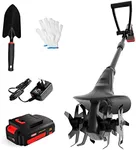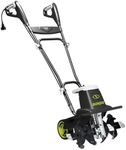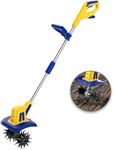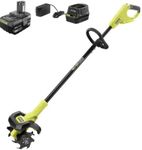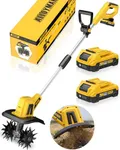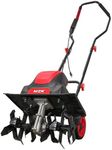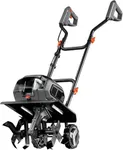Buying Guide for the Best Cordless Electric Tiller
Choosing the right cordless electric tiller can make gardening and soil preparation much easier and more efficient. When selecting a tiller, it's important to consider several key specifications to ensure you get a model that fits your needs. Understanding these specs will help you make an informed decision and find a tiller that will perform well in your garden.Battery VoltageBattery voltage indicates the power output of the tiller. Higher voltage generally means more power, which can be useful for tougher soil conditions. Common voltage ranges are 20V, 40V, and 60V. For light gardening tasks and softer soil, a 20V tiller may suffice. For medium to heavy-duty tasks or harder soil, consider a 40V or 60V model. Choose based on the type of soil and the size of the area you need to till.
Battery Capacity (Ah)Battery capacity, measured in ampere-hours (Ah), determines how long the tiller can run on a single charge. Higher Ah means longer runtime. Typical capacities range from 2.0Ah to 5.0Ah. For small gardens or short tasks, a lower capacity battery may be adequate. For larger areas or extended use, a higher capacity battery will be more beneficial. Consider how long you need to use the tiller in one go to decide the right capacity.
Tilling WidthTilling width refers to the width of the soil area that the tiller can cover in one pass. Common widths range from 8 inches to 16 inches. A wider tilling width allows you to cover more ground quickly, which is ideal for larger gardens. However, a narrower width can be more maneuverable and better suited for smaller or more intricate garden spaces. Choose based on the size and layout of your garden.
Tilling DepthTilling depth indicates how deep the tiller can dig into the soil. Depths typically range from 6 inches to 10 inches. Deeper tilling is useful for breaking up hard soil and preparing it for planting, while shallower tilling is sufficient for mixing in compost or aerating the soil. Consider the type of gardening you plan to do and the condition of your soil when selecting the tilling depth.
WeightThe weight of the tiller affects its ease of use and maneuverability. Lighter tillers (under 20 pounds) are easier to handle and transport, making them suitable for smaller gardens or users who may have difficulty with heavier equipment. Heavier tillers (over 20 pounds) can provide more stability and power, which is beneficial for larger or tougher soil areas. Choose a weight that you can comfortably manage while still meeting your gardening needs.
Handle AdjustabilityHandle adjustability refers to the ability to change the height and angle of the tiller's handle. Adjustable handles can make the tiller more comfortable to use, especially for extended periods. This feature is particularly important if multiple people of different heights will be using the tiller. Look for models with easily adjustable handles to ensure a comfortable and ergonomic gardening experience.
Noise LevelNoise level is an important consideration, especially if you live in a neighborhood with noise restrictions or if you prefer a quieter gardening experience. Cordless electric tillers are generally quieter than gas-powered models, but noise levels can still vary. Look for models that specify their decibel (dB) rating if noise is a concern for you. Lower dB ratings indicate quieter operation.
